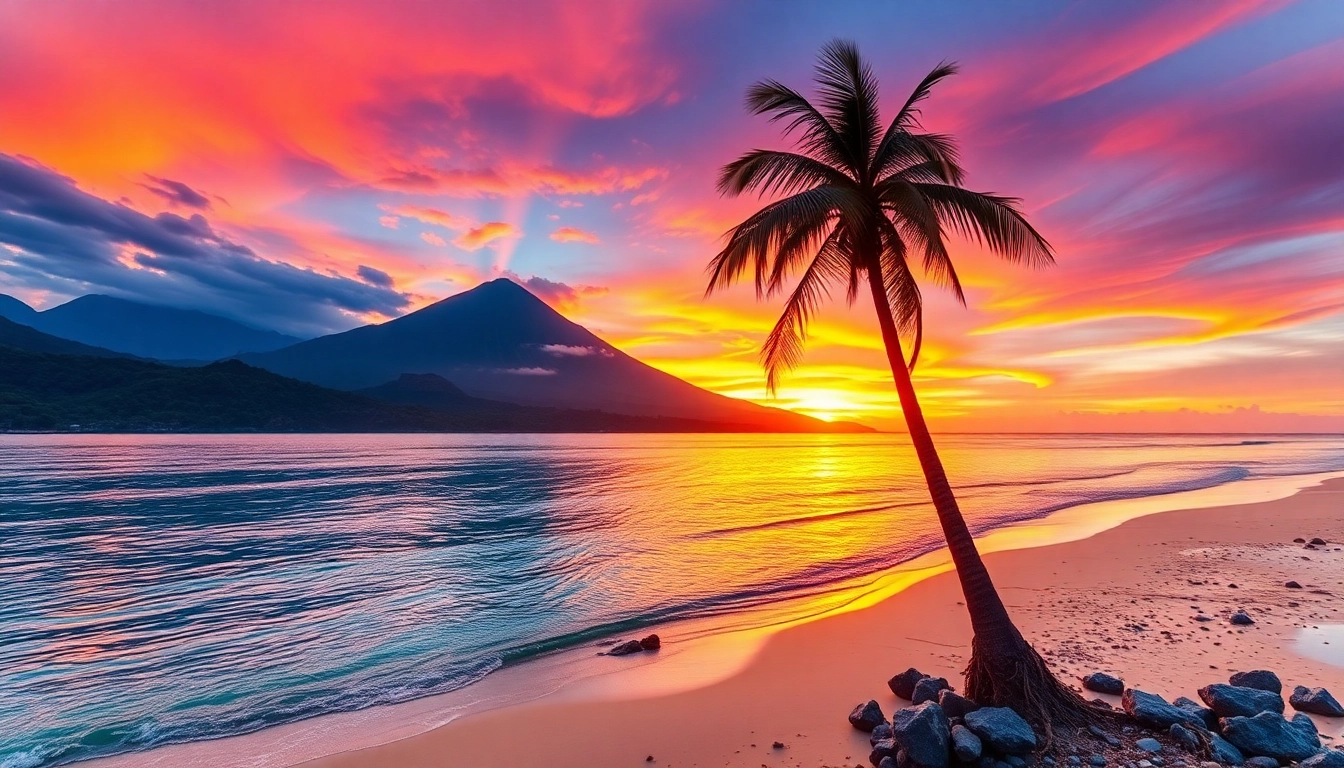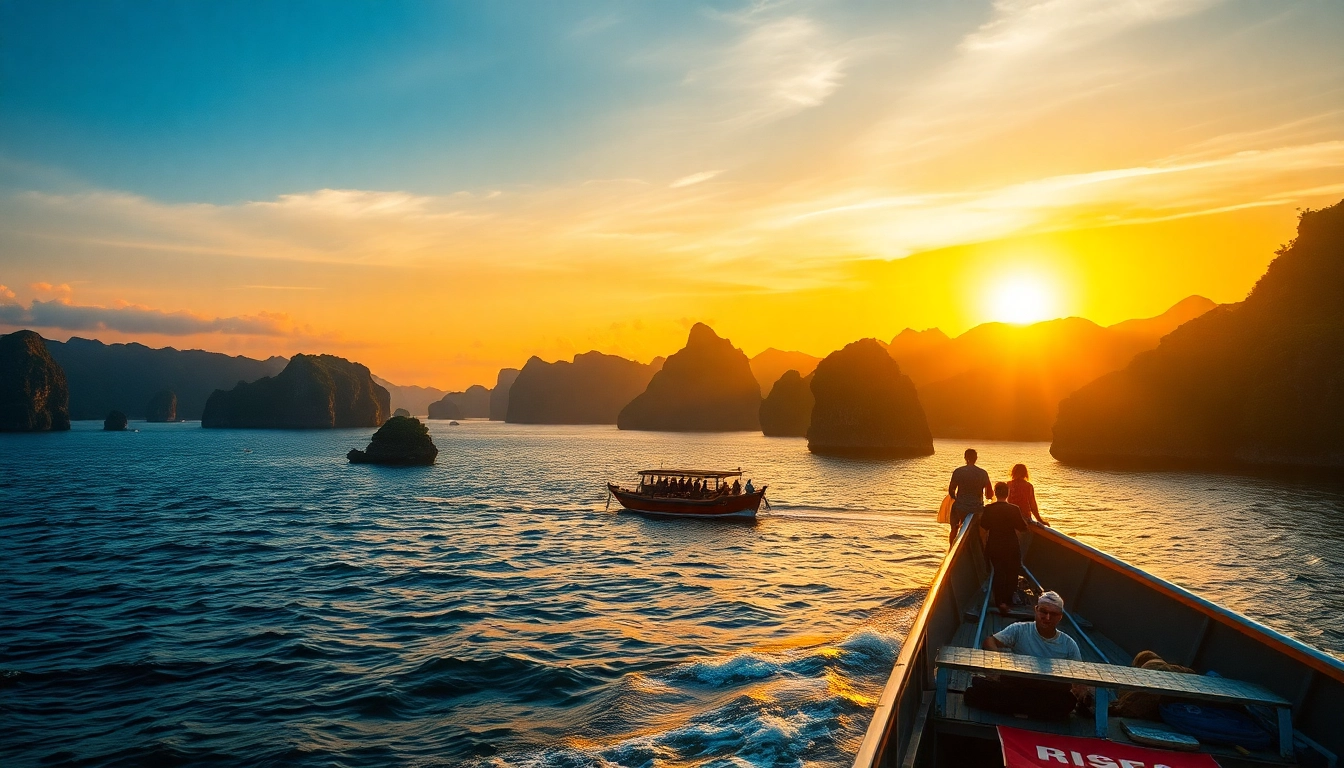Introduction to Lombok: Indonesia’s Vibrant Island Destination
Nestled in the heart of the Indonesian archipelago, Lombok is a captivating island known for its diverse landscapes, rich cultural tapestry, and abundant adventure opportunities. Often overshadowed by its neighbor Bali, Lombok’s authentic charm lies in its unspoiled beaches, majestic volcanoes, and vibrant local traditions. Whether you are a thrill-seeker, a cultural enthusiast, or a tranquility seeker, Lombok offers a multifaceted experience that caters to all interests. For travelers seeking a unique Indonesian experience, exploring Lombok is an opportunity to immerse yourself in a vibrant destination with profound natural and cultural riches. To fully understand this island’s appeal, it’s essential to examine its geographical features, historical background, key attractions, and insights into planning an optimal visit.
For more comprehensive details on this extraordinary island, visit Lombok.
Geographical Overview of Lombok’s Landscape and Climate
Lombok spans approximately 4,700 square kilometers and is part of the Lesser Sunda Islands chain. Its topography is characterized by a dramatic contrast between lush, mountainous terrain and pristine beaches that stretch along its shoreline. The island’s most iconic feature is Mount Rinjani, Indonesia’s second-highest volcano, standing at 3,726 meters above sea level. This active stratovolcano is a dominant geological feature and serves as a focal point for trekking enthusiasts worldwide. Surrounding Rinjani are fertile valleys, rice terraces, and forests teeming with diverse flora and fauna.
The coastline of Lombok is lined with white sandy beaches, coral reefs, and numerous islands, including the famous Gili Islands—Gili Trawangan, Gili Air, and Gili Meno—which are renowned for their clear waters and vibrant marine ecosystems. The island’s climate is tropical, with a distinct dry season from May to September and a wet season from October to April. The warm temperatures, averaging 26-30°C (79-86°F), combined with seasonal monsoons—especially between December and March—shape travel planning and outdoor activity schedules.
The island’s geographical diversity makes Lombok a perfect destination for ecological tourism, with options ranging from mountain climbing and jungle trekking to snorkeling and beach lounging. Its strategic location within the Pacific Ring of Fire explains the presence of volcanic landscapes, hot springs, and mineral-rich soils fueling its lush surroundings.
Historical and Cultural Significance
Lombok’s history is deeply rooted in indigenous traditions and complex cultural dynamics. The island is predominantly inhabited by the Sasak people, an ethnic group with a distinct language, customs, and religious practices. Historically, Lombok was part of ancient maritime kingdoms that traded across Southeast Asia, fostering a vibrant exchange of culture and religion.
Islam is the dominant religion on the island, coexisting with indigenous animist beliefs. Although modern developments have integrated these traditions, many villages maintain ancient rituals, ceremonies, and traditional arts. The historical sites such as Pusuk Pass and the ancient temples (prasats) reveal Lombok’s spiritual past and cultural resilience.
Lombok’s colonial history includes brief periods of Dutch influence, which left a subtle mark on architecture and administration. Yet, the island’s identity remains deeply anchored in its indigenous culture, reflected in traditional music, dance, textiles, and crafts that are showcased during festivals and daily life.
Understanding Lombok’s history is essential for travelers who wish to appreciate its authentic cultural expressions, such as the daily offerings, traditional Sasak houses, and local markets. These elements collectively shape Lombok’s identity as a vibrant and enduring Indonesian island.
Popular Attractions and Unique Features
Lombok’s allure lies in its diverse attractions, from majestic volcanoes and waterfalls to lively cultural hubs and idyllic islands. Each destination offers a unique experience, revealing the multiple layers of this captivating island.
Mount Rinjani: Indonesia’s Second Highest Volcano
Rinjani National Park encompasses the volcano, crater lake, hot springs, and biodiversity hotspots. Trekking to the summit provides an adrenaline rush and panoramic views of the surrounding islands. Such expeditions typically require 2-4 days and are best undertaken with guided tours for safety and navigation expertise.
Hidden Waterfalls and Natural Parks
Notable waterfalls include Sendang Gile and Tiu Kelep, located within Mount Rinjani’s foothills. These waterfalls are nestled within lush forests, offering refreshing retreats and excellent opportunities for photography. Other natural parks, such as Mount Rinjani National Park and Narmada Park, serve as ecological sanctuaries conserving endemic species and traditional landscapes.
Beaches and Islands: Gili Trawangan, Gili Air, and Gili Meno
The Gili Islands are world-renowned for their turquoise waters, vibrant coral reefs, and lively nightlife. Gili Trawangan is the most energetic, attracting backpackers and party-goers, while Gili Air and Meno cater to those seeking tranquility and snorkeling adventures. These islands epitomize Lombok’s marine beauty and are eco-friendly destinations with a focus on sustainable tourism.
Traditional Sasak Villages and Cultural Sites
Visit Desa Sade or Sukarara to observe traditional Sasak architecture, weaving, and dancing. These villages provide insights into local lifestyles, crafts, and ceremonies that have persisted over centuries. Participating in workshops or festivals here enriches the cultural experience.
Top Tourist Destinations in Lombok
Lombok is a treasure trove of natural wonders and cultural landmarks. Exploration beyond the obvious sights reveals hidden gems and culturally immersive experiences that will leave travelers with lasting memories.
Stunning Beaches and Islands: Gili Trawangan, Gili Air, and Gili Meno
The Gili Islands collectively form a top-tier snorkeling and diving destination, renowned for their vibrant coral reefs, sea turtles, and clear waters. Gili Trawangan particularly stands out for its nightlife, water sports, and island vibe, while Gili Air and Meno offer a more laid-back atmosphere perfect for unwinding.
Mount Rinjani Trekking and Volcano Exploration
Adventurers flock to Rinjani for its trekking routes, which range from beginner to advanced levels. Climbing to the crater’s rim is a physically demanding but rewarding experience, offering spectacular volcanic landscapes, hot springs, and the chance to witness sunrise over Indonesia’s volcanic landscape.
Waterfalls and Natural Parks
In addition to Sendang Gile, other waterfalls like Tiu Kelep and Benang Stokel are accessible via treks and guided tours. These spots are integral to eco-tourism and promote conservation efforts for the island’s biodiversity.
Historical and Cultural Sites
Beyond natural attractions, explore sites such as the Mayura Water Palace, traditional markets, and the ancient Sasak villages. These sites provide cultural context and reveal the island’s deep-rooted traditions.
Cultural Richness and Local Traditions
Lombok’s culture is a colorful blend of indigenous Sasak customs, Islamic influence, and historical legacies. Engaging with local communities provides a deeper appreciation of the island’s cultural nuances and timeless practices.
Traditional Sasak Villages and Handicrafts
Visit villages like Sade and Sukarara for their woven textiles, intricate embroidery, and traditional architecture. These crafts are not only artistic expressions but also vital economic activities for local artisans. Participating in weaving workshops offers an authentic hands-on experience more travelers seek today.
Culinary Delights and Art Scenes
Lombok’s cuisine features flavorful dishes such as Plecing Kangkung (spicy vegetable salad), Ayam Taliwang (spicy grilled chicken), and fresh seafood caught directly from the ocean. Local markets and warungs (small eateries) serve as hubs for experiencing authentic flavors. Additionally, the island’s art scene encompasses traditional music, dance, and contemporary art exhibitions, especially in the vibrant markets and cultural centers.
Festivals and Cultural Events
Events like the Bau Nyale Festival, celebrating the sea worms believed to be the reincarnation of princess Nyale, draw visitors from all over the world. Such festivals highlight indigenous beliefs, rituals, and communal bonding, making them essential cultural touchpoints for travelers.
Adventure Activities and Outdoor Experiences
Lombok is a haven for outdoor and adventure enthusiasts, offering a range of activities that challenge, excite, and connect travelers with nature.
Hiking, Trekking, and Volcano Climbing
The primary attraction is the Rinjani climb, but other hiking trails lead through rice paddies, forests, and coastal paths. Guides and eco-tourism operators provide expertise, ensuring safety and environmental sustainability. Trekkers should prepare for variable weather and rugged terrain to maximize their adventure.
Water Sports: Surfing, Snorkeling, and Diving
With surf spots like Selong Belanak, Mawun, and the beaches around Kuta Lombok, the island is a surfer’s paradise. Coral reefs off the coast invite snorkeling and diving, facilitating encounters with colorful marine life such as reef sharks, manta rays, and vibrant tropical fish. Equipment rental, lessons, and eco-conscious practices are widely available.
Wildlife and Eco-tourism Opportunities
Wildlife viewing includes spotting sea turtles, exploring birdwatching sites, and supporting conservation programs. Eco-tours also focus on community-driven initiatives, sustainable farming, and forest preservation, which foster responsible tourism and long-term ecological health.
Travel Tips and Practical Information for Visiting Lombok
Best Time to Visit and Seasonal Highlights
Optimal visiting periods are during the dry season from May to September, when weather conditions favor outdoor activities, beach lounging, and mountain climbing. Peak tourist months align with school holidays, so early planning is recommended to secure accommodation and tours.
Transportation Options and Accommodation Tips
Flights arrive mainly at Lombok International Airport (YIA), with other options including ferries from Bali or Java. Once on the island, transportation is facilitated via rental scooters, private drivers, and local taxis. Accommodations range from luxury resorts and boutique hotels to budget hostels and homestays—particularly in Kuta Lombok and Senggigi areas, which serve as travel hubs.
Planning Your Itinerary: Must-See Spots and Hidden Gems
An ideal itinerary balances natural attractions, cultural experiences, and leisure. Start with a few days exploring the beaches and Gili Islands, then ascend Mount Rinjani or visit waterfalls. Incorporate village visits and local markets to deepen cultural understanding. For a less touristy experience, explore remote beaches and indigenous villages off the beaten path.

